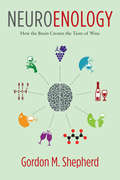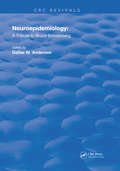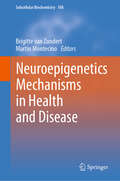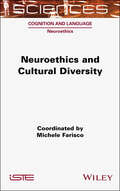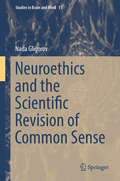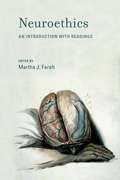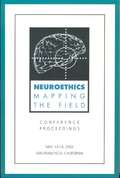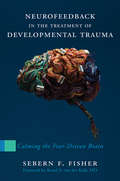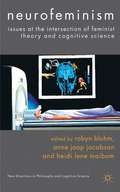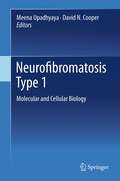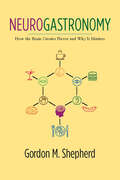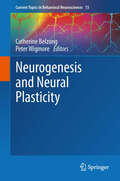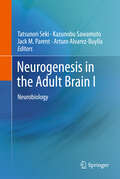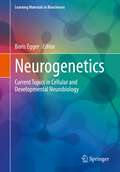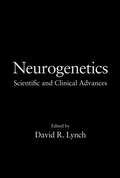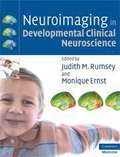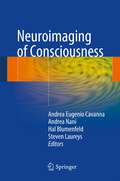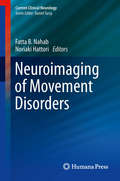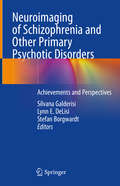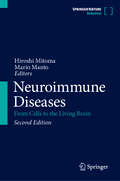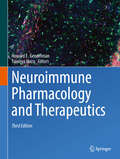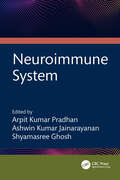- Table View
- List View
Neuroenology: How the Brain Creates the Taste of Wine
by Gordon ShepherdIn his new book, Gordon M. Shepherd expands on the startling discovery that the brain creates the taste of wine. This approach to understanding wine's sensory experience draws on findings in neuroscience, biomechanics, human physiology, and traditional enology. Shepherd shows, just as he did in Neurogastronomy: How the Brain Creates Flavor and Why It Matters, that creating the taste of wine engages more of the brain than does any other human behavior. He clearly illustrates the scientific underpinnings of this process, along the way enhancing our enjoyment of wine.Neuroenology is the first book on wine tasting by a neuroscientist. It begins with the movements of wine through the mouth and then consults recent research to explain the function of retronasal smell and its extraordinary power in creating wine taste. Shepherd comprehensively explains how the specific sensory pathways in the cerebral cortex create the memory of wine and how language is used to identify and imprint wine characteristics. Intended for a broad audience of readers—from amateur wine drinkers to sommeliers, from casual foodies to seasoned chefs—Neuroenology shows how the emotion of pleasure is the final judge of the wine experience. It includes practical tips for a scientifically informed wine tasting and closes with a delightful account of Shepherd's experience tasting classic Bordeaux vintages with French winemaker Jean-Claude Berrouet of the Chateau Petrus and Dominus Estate.
Neuroepidemiology: A Tribute To Bruce Schoenberg (Routledge Revivals)
by Dallas W. AndersonFirst published in 1991. This one-of-a-kind publication pays tribute to one of the pre-eminent scientists and educators in neuroepidemiology, Dr. Bruce Schoenberg. The goal of this book is to provide a comprehensive, state-of-the-art review of the work that has taken place in the field of neuroepidemiology over the last decade and address the challenges and prospects of the future. The work presented in this volume focuses on clinically relevant issues related to the magnitude, distribution, natural history, risk factors, treatment, and prevention of the more common neurologic disorders. It also emphasizes methodological problems that affect the design and implementation of studies, as well as the interpretation of results. The book's concise format provides quick access to the major results, difficulties, and challenges discussed within the text. Neuroepidemiology: A Tribute to Bruce Schoenberg should be considered an essential addition to the libraries of all clinical neurologists and epidemiologists.
Neuroepigenetics Mechanisms in Health and Disease (Subcellular Biochemistry #108)
by Brigitte Van Zundert Martin MontecinoThe book Neuroepigenetic Mechanisms in Health and Disease provides insight into mechanisms of epigenetic control, focusing on molecular, cellular and integrative aspects of neurobiology. Here, leading investigators in the field discuss in each chapter landmark scientific discoveries and recent advances in (neuro) epigenetics. Whereas some chapters concentrate in overviewing basic epigenetic mechanisms and the power of epigenome editing, other sections of the book discuss epigenetic control during learning and memory as well as in diverse brain related alterations, including neurodegenerative and rare neurologic diseases, and psychiatric disorders. In addition, the book covers relevant topics for modern human societies, including how drug abuse, environmental enrichment and meditation can influence brain function through epigenetic mechanisms. This book aims to serve as a useful source for junior scientists to first learn about the topic, as well as to more experienced researchers that seek for a broader view of this rapidly growing field that is beyond their area of specialization.
Neuroethics and Cultural Diversity
by Michele FariscoThere is a growing discussion concerning the relationship between neuroethical reflections and cultural diversity, which is among the most impactful factors in shaping neuroethics, both as a scientific discipline and a social enterprise. The impacts of culture on science and its public perception are particularly relevant to neuroethics, which aims to facilitate the creation of an interface between neuroscience and society at large. Time is ripe for neuroethics to review the influence of the culturally specific contexts from which it originated (i.e. North America and Western Europe) and to also include other cultural perspectives in the discussion. This book illustrates a convergent approach among different cultures in identifying the main issues raised by neuroscience and emerging technologies. This should be taken as a starting point for advancing in the search for shared solutions, which are, if not definitive, at least sufficiently reliable to be translated into democratic deliberative processes.
Neuroethics and the Scientific Revision of Common Sense
by Nada GligorovThis book is focused on the examination of the particular relationship between developments in neuroscience and commonsense concepts, such as free will, personal identity, privacy, etc. , which feature prominently in moral discourse. In the book common sense is recast as an ever-shifting repository of theories from many domains, including science. Utilizing this alternative characterization of common sense, the book reexamines the impact of neuroscience on commonsense moral conceptions. Neuroethics is one of the newest, developing branches of Bioethics. Topics often raised include issues of free will, personal identity and the self; the possible ethical implication of memory manipulation; brain imaging and mind-reading; brain stimulation/enhancement and its impacts on personal identity; and brain death.
Neuroethics: An Introduction with Readings
by Martha J. Farah A. Robert Jean L. ToddieExplores the ethical, legal, and societal issues arising from brain imaging, psychopharmacology, and other new developments in neuroscience. Neuroscience increasingly allows us to explain, predict, and even control aspects of human behavior. The ethical issues that arise from these developments extend beyond the boundaries of conventional bioethics into philosophy of mind, psychology, theology, public policy, and the law. This broader set of concerns is the subject matter of neuroethics. In this book, leading neuroscientist Martha Farah introduces the reader to the key issues of neuroethics, placing them in scientific and cultural context and presenting a carefully chosen set of essays, articles, and excerpts from longer works that explore specific problems in neuroethics from the perspectives of a diverse set of authors. Included are writings by such leading scientists, philosophers, and legal scholars as Carl Elliot, Joshua Greene, Steven Hyman, Peter Kramer, and Elizabeth Phelps. Topics include the ethical dilemmas of cognitive enhancement; issues of personality, memory and identity; the ability of brain imaging to both persuade and reveal; the legal implications of neuroscience; and the many ways in which neuroscience challenges our conception of what it means to be a person. Neuroethics is an essential guide to the most intellectually challenging and socially significant issues at the interface of neuroscience and society. Farah's clear writing and well-chosen readings will be appreciated by scientist and humanist alike, and the inclusion of questions for discussion in each section makes the book suitable for classroom use. Contributors Zenab Amin, Ofek Bar-Ilan, Richard G. Boire, Philip Campbell, Turhan Canli, Jonathan Cohen, Robert Cook-Degan, Lawrence H. Diller, Carl Elliott, Martha J. Farah, Rod Flower, Kenneth R. Foster, Howard Gardner, Michael Gazzaniga, Jeremy R. Gray, Henry Greely, Joshua Greene, John Harris, Andrea S. Heberlein, Steven E. Hyman, Judy Iles, Eric Kandel, Ronald C. Kessler, Patricia King, Adam J. Kolber, Peter D. Kramer, Daniel D. Langleben, Steven Laureys, Stephen J. Morse, Nancey Murphy, Eric Parens, Sidney Perkowitz, Elizabeth A. Phelps, President's Council on Bioethics, Eric Racine, Barbara Sahakian, Laura A. Thomas, Paul M. Thompson, Stacey A. Tovino, Paul Root Wolpe
Neuroethics: Mapping the Field
by Steven J. MarcusThis volume contains the proceedings of a two-day multidisciplinary conference on the ethical implications of brain research organized by Stanford University and the University of California, San Francisco. Leaders in neuroscience, journalism, law, and philosophy, among other fields, engaged in a freewheeling debate on the social and individual effects of the research. Steven Marcus has edited their formal and informal deliberations to present a compelling first-hand account of the proceedings, providing a highly readable front-row seat about the first-ever symposium on neuroethics.
Neurofeedback in the Treatment of Developmental Trauma (10th Anniversary Edition): Calming the Fear-Driven Brain
by Sebern F. FisherThe celebrated text on working with the circuitry of the brain to restore emotional health—with a new preface from the author. The brain’s circuitry reveals much about its role in our emotional stability and resilience. Neurofeedback allows clinicians to guide their clients as they learn to transform these brain-wave patterns. In this revolutionary book, experienced clinician Sebern Fisher demonstrates neurofeedback’s profound ability to help treat one of the most intractable mental health concerns of our time: severe childhood abuse, neglect, or abandonment, otherwise known as developmental trauma. A mix of fundamental theory, nuts-and-bolts practice, and compelling case studies, this book delivers an accessible look at the mind and brain in developmental trauma, what a “trauma identity” looks like, and how neurofeedback can be used to retrain the brain, thereby fostering a healthier, more stable state of mind. Now celebrating a decade of publication, Neurofeedback in the Treatment of Developmental Trauma remains a cornerstone text in the field, and a new preface from the author grounds the book in the most current neurofeedback modalities.
Neurofeminism
by Robyn Bluhm Anne Jaap Jacobson Heidi Lene MaibomGoing beyond the hype of recent fMRI 'findings', thisinterdisciplinary collection examines such questions as: Do women and men have significantly different brains? Do women empathize, while men systematize? Is there a 'feminine' ethics? What does brain research on intersex conditions tell us about sex and gender?
Neurofibromatosis Type 1
by Meena Upadhyaya David N CooperNeurofibromatosis type 1 (NF1), caused by mutational inactivation of the NF1 tumour suppressor gene, is one of the most common dominantly inherited human disorders, affecting 1 in 3000 individuals worldwide. This book presents in concise fashion, but as comprehensively as possible, our current state of knowledge on the molecular genetics, molecular biology and cellular biology of this tumour predisposition syndrome. Written by internationally recognized experts in the field, the 44 chapters that constitute this edited volume provide the reader with a broad overview of the clinical features of the disease, the structure and expression of the NF1 gene, its germ line and somatic mutational spectra and genotype-phenotype relationships, the structure and function of its protein product (neurofibromin), NF1 modifying loci, the molecular pathology of NF1-associated tumours, animal models of the disease, psycho-social aspects and future prospects for therapeutic treatment.
Neurogastronomy: How the Brain Creates Flavor and Why It Matters
by Gordon M. Shepherd&“A personal yet magisterial account of the new brain-based approach to flavor perception . . . [a] panoramic view of science, culture, and behavior.&”—Avery Gilbert, author of What the Nose Knows Leading neuroscientist Gordon M. Shepherd embarks on a paradigm-shifting trip through the &“human brain flavor system,&” laying the foundations for a new scientific field: neurogastronomy. Challenging the belief that the sense of smell diminished during human evolution, Shepherd argues that this sense, which constitutes the main component of flavor, is far more powerful and essential than previously believed. Shepherd begins Neurogastronomy with the mechanics of smell, particularly the way it stimulates the nose from the back of the mouth. As we eat, the brain conceptualizes smells as spatial patterns, and from these and the other senses it constructs the perception of flavor. Shepherd then considers the impact of the flavor system on contemporary social, behavioral, and medical issues. He analyzes flavor&’s engagement with the brain regions that control emotion, food preferences, and cravings, and he even devotes a section to food&’s role in drug addiction and, building on Marcel Proust&’s iconic tale of the madeleine, its ability to evoke deep memories. Shepherd connects his research to trends in nutrition, dieting, and obesity, especially the challenges that many face in eating healthily. He concludes with human perceptions of smell and flavor and their relationship to the neural basis of consciousness. Everyone from casual diners and ardent foodies to wine critics, chefs, scholars, and researchers will delight in Shepherd&’s fascinating, scientific-gastronomic adventures. &“Those who make the effort will be rewarded: they&’ll never look at eating the same way again.&”—Library Journal
Neurogastronomy: How the Brain Creates Flavor and Why It Matters
by Gordon ShepherdLeading neuroscientist Gordon M. Shepherd embarks on a paradigm-shifting trip through the "human brain flavor system," laying the foundations for a new scientific field: neurogastronomy. Challenging the belief that the sense of smell diminished during human evolution, Shepherd argues that this sense, which constitutes the main component of flavor, is far more powerful and essential than previously believed.Shepherd begins Neurogastronomy with the mechanics of smell, particularly the way it stimulates the nose from the back of the mouth. As we eat, the brain conceptualizes smells as spatial patterns, and from these and the other senses it constructs the perception of flavor. Shepherd then considers the impact of the flavor system on contemporary social, behavioral, and medical issues. He analyzes flavor's engagement with the brain regions that control emotion, food preferences, and cravings, and he even devotes a section to food's role in drug addiction and, building on Marcel Proust's iconic tale of the madeleine, its ability to evoke deep memories. Shepherd connects his research to trends in nutrition, dieting, and obesity, especially the challenges that many face in eating healthily. He concludes with human perceptions of smell and flavor and their relationship to the neural basis of consciousness. Everyone from casual diners and ardent foodies to wine critics, chefs, scholars, and researchers will delight in Shepherd's fascinating, scientific-gastronomic adventures.
Neurogenesis and Neural Plasticity
by Catherine Belzung Peter WigmoreThis volume brings together authors working on a wide range of topics to provide an up to date account of the underlying mechanisms and functions of neurogenesis and synaptogenesis in the adult brain. With an increasing understanding of the role of neurogenesis and synaptogenesis it is possible to envisage improvements or novel treatments for a number of diseases and the possibility of harnessing these phenomena to reduce the impact of ageing and to provide mechanisms to repair the brain.
Neurogenesis in the Adult Brain II
by Arturo Alvarez-Buylla Tatsunori Seki Jack M. Parent Kazunobu SawamotoThe discovery of adult neurogenesis caused a paradigm shift in the neurosciences. For more than 100 years, it was believed that adult neurons do not regenerate. Joseph Altman and Fernando Nottebohm found proof to the contrary and changed the course of history. Their research, included here, provides the foundations of the field. Today, adult neurogenesis is a rapidly expanding discipline applicable to the study of brain development and diseases, learning and memory, aging, and neuropsychiatric disorders. With multiple authors, the 27 chapters of this book contain the latest work in two volumes. The first presents the basic biology of adult neurogenesis in non-mammalian vertebrates and in the mammalian hippocampus and olfactory bulb, and the second discusses clinical implications and delves into adult neurogenesis and brain injury as well as neurodegenerative and neuropsychiatric pathologies. With details of the anatomy, physiology, and molecular biology of the two neurogenic brain regions, this book provides indispensable knowledge for many areas of neuroscience and for experimental and clinical applications of adult neurogenesis to brain therapy.
Neurogenetics: Current Topics in Cellular and Developmental Neurobiology (Learning Materials in Biosciences)
by Boris EggerThis textbook provides students with knowledge of neurogenetics, neurogenesis, neuronal specification and function, neuronal networks, learning and memory formation, brain evolution, and neurodegenerative diseases.Students are introduced to topics of classical developmental genetics as well as modern molecular and neurogenetic methods. Using a wealth of examples from current research, the textbook takes a strong applied approach. Using animal models such as Drosophila melanogaster and Caenorhabditis elegans as well as mammalian systems, the interrelationships between genes, neurons, nervous systems, and behaviour under normal and pathological conditions are illustrated. The textbook aims encourage students to address biological questions in neurogenetics and to think about the design of their own experiments. It targets primarily master and graduate students in neurobiology, but is also a valuable teaching tool for instructors in these fields.
Neurogenetics: Scientific and Clinical Advances (Neurological Disease and Therapy)
by David R. LynchStanding at the forefront of neurogenetic medicine, this reference supplies the tools and information required by clinicians to become familiar with modern neurogenetic approaches and apply the data gleaned from these technologies to the diagnosis and treatment of neurogenetic disorders, as well as traditionally non-genetic conditions such as Parki
Neuroglia in Neurodegenerative Diseases (Advances in Experimental Medicine and Biology #1175)
by Vladimir Parpura Alexei Verkhratsky Margaret S. Ho Robert ZorecThis book provides a comprehensive overview of the role of neuroglia in neurodegenerative diseases. Neuroglia are the most abundant cells in the nervous system and consist of several distinct cell types, such as astrocytes, oligodendrocytes,and microglia. Accumulating evidence suggests that neuroglia participate in the neurodegenerative process, and as such are essential players in a variety of diseases, including Alzheimer’s, Parkinson’s, and Huntington’s. Intended for researchers and students, the book presents recent advances concerning the biology of neuroglia as well as their interaction with neurons during disease progression. In addition, to highlight the function of neuroglia in different types of neurodegenerative disease, it also discusses their mechanisms and effects on protecting or damaging neurons.
Neuroimaging in Developmental Clinical Neuroscience
by Judith M. Rumsey Monique Ernst Husseini K. ManjiModern neuroimaging offers tremendous opportunities for gaining insights into normative development and a wide array of developmental neuropsychiatric disorders. Focusing on ontogeny, this text covers basic processes involved in both healthy and atypical maturation, and also addresses the range of neuroimaging techniques most widely used for studying children. This book will enable you to understand normative structural and functional brain maturation and the mechanisms underlying basic developmental processes; become familiar with current knowledge and hypotheses concerning the neural bases of developmental neuropsychiatric disorders; and learn about neuroimaging techniques, including their unique strengths and limitations. Coverage includes normal developmental processes, atypical processing in developmental neuropsychiatric disorders, ethical issues, neuroimaging techniques and their integration with psychopharmacologic and molecular genetic research approaches, and future directions. This comprehensive volume is an essential resource for neurologists, neuropsychologists, psychiatrists, pediatricians, and radiologists concerned with normal development and developmental neuropsychiatric disorders.
Neuroimaging of Consciousness
by Steven Laureys Andrea Eugenio Cavanna Andrea Nani Hal BlumenfeldWithin the field of neuroscience, the past few decades have witnessed an exponential growth of research into the brain mechanisms underlying both normal and pathological states of consciousness in humans. The development of sophisticated imaging techniques to visualize and map brain activity in vivo has opened new avenues in our understanding of the pathological processes involved in common neuropsychiatric disorders affecting consciousness, such as epilepsy, coma, vegetative states, dissociative disorders, and dementia. This book presents the state of the art in neuroimaging exploration of the brain correlates of the alterations in consciousness across these conditions, with a particular focus on the potential applications for diagnosis and management. Although the book has a practical approach and is primarily targeted at neurologists, neuroradiologists, and psychiatrists, it will also serve as an essential reference for a wide range of researchers and health care professionals.
Neuroimaging of Movement Disorders
by Fatta B. Nahab Noriaki HattoriIn the diagnosis and treatment of movement disorders, the use of neuroimaging has expanded widely and has been an exciting, important modality for unlocking the causes of abnormal motor control. With ever improving machinery, data collection techniques and analysis methods, researchers are now being presented with an exponentially increasing amount of data that they must wade through and interpret in the context of existing knowledge about movement disorders. In Neuroimaging in Movement Disorders, the editors have produced a gold-standard resource that brings together an impressive international group of authorities in their respective fields to outline the current state of knowledge. Controversies, such as conflicting findings and methodological limitations, are covered and provide the reader with a comprehensive yet pragmatic understanding of the state of science. The chapters offer both comprehensive reviews of various neuroimaging methods and also more in-depth summaries of the contributions made by neuroimaging in individual movement disorders. Although many of the neuroimaging methods that are discussed have not been routinely used in clinical practice, the authors skillfully provide the reader with adequate detail to understand the requirements for using these methods and in some cases even the starting knowledge to begin local implementation. Neuroimaging in Movement Disorders is an indispensable reference that will be of value to all physicians and researchers involved in the care of patients with movement disorders.
Neuroimaging of Schizophrenia and Other Primary Psychotic Disorders: Achievements And Perspectives
by Silvana Galderisi Lynn E. DeLisi Stefan BorgwardtThis book presents the state of the art in the use of neuroimaging technologies in the study of schizophrenia and other primary psychotic disorders. The contributions of neuroimaging in the characterization of these disorders are reviewed across diagnoses, by focusing on psychopathological domains and at-risk populations in order to understand the implications for treatment. The principal neuroimaging findings are described in detail, identifying those that are common to and specific for each disorder and highlighting important pitfalls. Attention is drawn to potential translational aspects of research in the field, with discussion of emerging innovative perspectives. Neuroimaging research has shown that abnormalities of brain structure and function associated with psychiatric disorders do not reflect the boundaries of current diagnostic categories. However, neuroimaging findings are being reconsidered in the light of recent research proposals aimed at re-conceptualizing classification systems in Psychiatry. Written by leading experts, this book will appeal to all with an interest in the field, including researchers, clinicians, and trainees.
Neuroimaging of Sleep and Sleep Disorders
by Michael J. Thorpy Eric Nofzinger Pierre MaquetThis up-to-date, superbly illustrated book is a practical guide to the effective use of neuroimaging in the patient with sleep disorders. There are detailed reviews of new neuroimaging techniques - including CT, MRI, advanced MR techniques, SPECT and PET - as well as image analysis methods, their roles and pitfalls. Neuroimaging of normal sleep and wake states is covered plus the role of neuroimaging in conjunction with tests of memory and how sleep influences memory consolidation. Each chapter carefully presents and analyzes the key findings in patients with sleep disorders indicating the clinical and imaging features of the various sleep disorders from clinical presentation to neuroimaging, aiding in establishing an accurate diagnosis. Written by neuroimaging experts from around the world, Neuroimaging of Sleep and Sleep Disorders is an invaluable resource for both researchers and clinicians including sleep specialists, neurologists, radiologists, psychiatrists, psychologists.
Neuroimmune Diseases: From Cells to the Living Brain
by Mario Manto Hiroshi MitomaThis Springer Major Reference Work provides a detailed translational overview of neuroimmune diseases for neuroscientists and clinicians, clarifying the pathological mechanisms underlying neuroimmune diseases and building a comprehensive bridge between the latest research findings and their clinical implications in daily practice. The material is presented in two steps. The first section comprises a review of the pathogenic actions of immune cells in brain diseases. Here the authors discuss the mechanisms through which immune cells disrupt the functions of nerve cells. The second section explores the ways in which the brain becomes dysfunctional due to impaired nerve cell function. Based on pathogenesis, diagnostic and therapeutic strategies are discussed for each clinical category. The new edition features updated chapters throughout, including coverage of new findings, new diagnostic criteria, and therapeutic algorithms. Neuroimmune Diseases, 2nd edition, also includes new chapters with a translational approach. The book will be invaluable for use in clinical practice of neuroimmune diseases.
Neuroimmune Pharmacology and Therapeutics
by Howard E. Gendelman Tsuneya IkezuBridging neuroscience, immunology, and pharmacology, and bringing together the foremost authorities, Neuroimmune Pharmacology and Therapeutics, 3rd edition, is an invaluable reference and textbook. The text discusses the immunology of the nervous system. New chapters are offered on innate, humoral, and cellular immune responses (innate and adaptive immunity). The additions join each component of the immune response in descriptions for how each affects nervous system function in both health and disease. Next, discussions of neuropharmacology now include both drug development and delivery into brain subregions to optimize clinical responses. This edition features greatly expanded coverage of therapeutics. The new extensions have blossomed into focused therapies engaging the immune system directly, deploying it for drug delivery, attracting the newly evolving field of genetics, vaccinations, and bioengineering, ultimately leading to improved therapeutic disease outcomes. All of the revisions in this edition are designed to bring an early trainee together with a skilled clinical and translational scientist to discuss the state of the art in each part of the emerging field of immunity as it affects the nervous system during steady state and disease and how it can be harnessed for therapeutics and clinical benefit.
Neuroimmune System
by Shyamasree Ghosh Arpit Kumar Pradhan Ashwin Kumar JainarayananThe book explores the intricate connections between the nervous and immune systems in the context of neurodegenerative disorders, offering a comprehensive overview of the bidirectional communication between these systems and their implications for disease progression and therapeutic interventions. The book aims to understand the recent developments in the field of neuroimmune communication.Key Features: In-depth analysis of immunological biomarkers and therapeutic targets for neurodegenerative disorders. Exploration of the role of glial cells in neuroimmune interactions and their dual nature in disease pathology. Examination of short- and long-range interactions between the central nervous system (CNS) and immune system, including hormonal axis and cytokine milieu. Discussion on the impact of microbiota on neural networks and immune responses, highlighting the gut-brain axis and potential therapeutic avenues. Utilization of Drosophila model systems to study neurodegeneration, providing insights into disease mechanisms and potential treatment strategies. Coverage of various neurodegenerative disorders, including Alzheimer’s, Parkinson’s, polyglutamine-related diseases, and tauopathy, with a focus on understanding disease progression and identifying therapeutic targets. The book stands out for its interdisciplinary approach, bridging the fields of neuroscience, immunology, and microbiology to provide a holistic understanding of neurodegenerative diseases. It offers valuable insights into the complex interplay between the nervous and immune systems, shedding light on novel therapeutic avenues for treating these debilitating conditions. Suitable for researchers, clinicians, and students in the fields of neurology, immunology, and microbiology, this book serves as an essential resource for understanding the pathogenesis and treatment of neurodegenerative disorders.
